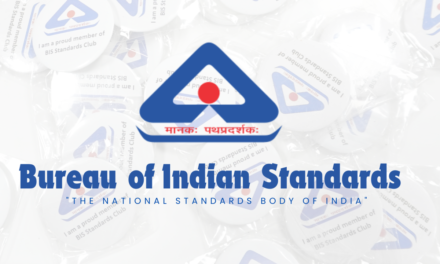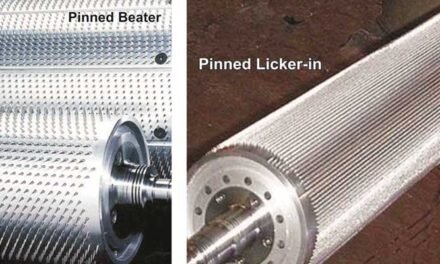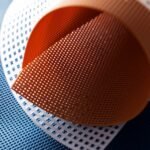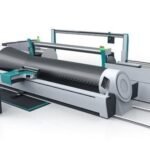What are the different coating techniques used in the textile industry, such as lamination, immersion, and spraying, and how do they impact the fabric’s performance?
Coating techniques are used in the textile industry to apply various materials to fabrics, enhancing their performance for specific uses, such as waterproofing, durability, and comfort. Different methods of applying coatings have distinct effects on the fabric’s properties, and each technique is selected based on the desired functionality of the end product.
Here are the most common coating techniques used in the textile industry:
1. Lamination (Film Lamination):
- Description:
- In lamination, a thin film or membrane (such as polyurethane, PVC, or silicone) is bonded to the fabric through heat or pressure. This creates a continuous layer that can be either on one or both sides of the fabric.
- Impact on Fabric Performance:
- Waterproofing: The lamination process creates an impermeable barrier that prevents water from passing through the fabric, making it ideal for rainwear, outdoor gear, and tents.
- Breathability: Depending on the coating material, lamination can reduce breathability unless a microporous or breathable membrane (like Gore-Tex) is used.
- Durability: Lamination enhances the fabric’s resistance to wind, dirt, and UV degradation.
- Flexibility: It maintains the fabric’s flexibility, but heavy laminates may make the fabric stiffer.
- Common Applications: Outdoor wear, protective clothing, raincoats, tents, and upholstery.
2. Immersion (Dipping):
- Description:
- In the immersion technique, the fabric is dipped into a liquid coating (e.g., rubber, latex, polyurethane) or a solution that contains coating agents. The fabric absorbs the coating material before being cured (e.g., by heat or air drying).
- Impact on Fabric Performance:
- Waterproofing: Provides excellent water resistance by creating a thick coating layer.
- Durability: Immersion can add significant durability, making the fabric resistant to wear and tear.
- Weight: This technique can add substantial weight to the fabric depending on the thickness of the coating, which may affect comfort for clothing applications.
- Flexibility: Immersion can lead to a stiffer fabric, especially with rubber coatings.
- Texture: The coating is generally more rigid compared to other techniques like spraying, and may result in a glossy or smooth finish.
- Common Applications: Tarpaulins, gloves, footwear, industrial fabrics, and waterproof coatings.
3. Spraying (Spray Coating):
- Description:
- In spray coating, a fine mist of the coating material is applied to the fabric’s surface using air or a mechanical spraying device. The fabric is typically passed through a spray booth where the coating is uniformly applied.
- Impact on Fabric Performance:
- Water Resistance: Provides water resistance, though generally less durable than immersion or lamination. It may need additional layers or post-treatment for stronger waterproofing.
- Breathability: Spraying usually retains more breathability than thicker coating methods because less coating material is applied.
- Texture: Spray coating tends to result in a softer, more flexible finish compared to thicker laminates or immersions.
- Durability: While it adds some level of durability, it may not be as resistant to abrasion as other coating techniques and might wear off over time, especially in high-stress areas.
- Common Applications: Fashion garments, upholstery, car seats, non-woven fabrics, and tents.
4. Knife Coating (Knife-over-roller):
- Description:
- In knife coating, a liquid coating is applied to the fabric using a knife (a blade) that spreads the coating material evenly across the fabric as it moves under the blade. The coating is then dried or cured to form a uniform layer.
- Impact on Fabric Performance:
- Precision: This technique allows for controlled application, ensuring an even coating thickness.
- Waterproofing & Protection: Knife coating can offer water resistance and protection from environmental elements.
- Surface Finish: Provides a smooth, consistent finish and can be used for both light and heavy coatings.
- Durability: The process generally creates a durable, wear-resistant finish without compromising fabric strength.
- Weight: Depending on the coating, the fabric may gain some additional weight.
- Common Applications: Upholstery, synthetic leather, medical fabrics, and packaging materials.
5. Roll Coating:
- Description:
- Roll coating involves the application of a coating material to fabric as it passes through two rollers. The coating is applied to the fabric in a very controlled manner, usually by a gap between the rollers that determines the thickness of the applied layer.
- Impact on Fabric Performance:
- Uniform Coating: It allows for very uniform coverage across the fabric.
- Water Resistance: Can provide water resistance or waterproofing, depending on the coating material used.
- Durability: Roll coating is often used for applications where high durability and abrasion resistance are required.
- Smoothness: The fabric maintains a smooth surface finish, which is ideal for certain high-end applications.
- Common Applications: Technical textiles, automotive fabrics, and protective clothing.
6. Transfer Coating:
- Description:
- In transfer coating, the coating material is first applied to a release film, which is then pressed onto the fabric. Heat and pressure are applied to ensure the coating bonds to the fabric.
- Impact on Fabric Performance:
- Fine Control: Provides high precision in coating thickness and pattern.
- Waterproofing & Protection: Offers waterproofing or protection against stains and dirt.
- Flexibility: Transfer coating retains the flexibility of the base fabric, as it applies a very thin layer of coating.
- Aesthetic Design: This method is often used to achieve specific patterns or finishes on the fabric.
- Common Applications: Decorative fabrics, fashion, and upholstery.
7. Foam Coating
- Description:
- Foam coating is a technique where a foam layer is applied to the fabric surface. The foam can be made from various materials like polyurethane, silicone, or PVC. It is typically cured or dried after application.
- Impact on Fabric Performance:
- Softness and Comfort: Foam coatings add softness and comfort to the fabric, making it ideal for applications like upholstery and mattresses.
- Waterproofing: Provides moderate water resistance and may be used in combination with other coatings for enhanced waterproofing.
- Breathability: Foam coatings are typically more breathable than solid coatings, making them suitable for some apparel applications.
- Insulation: Foam coatings can provide insulation properties, especially in outerwear and bedding applications.
- Common Applications: Upholstery, mattresses, thermal and noise-insulating fabrics.
8. Electrostatic Coating (Electrospinning or Electrocoating)
- Description:
- Electrostatic coating involves using an electric field to deposit a charged coating material onto a fabric surface. This method is often used for thin, fine coatings and is particularly useful for applying nanofiber coatings.
- Impact on Fabric Performance:
- Fine Control: Offers high precision and uniformity in applying very thin coatings.
- Waterproofing & Functional Coatings: Can be used to apply hydrophobic or antimicrobial coatings.
- Breathability: Electrostatic coatings generally do not compromise the fabric’s breathability, making them suitable for high-performance fabrics.
- Durability: The durability depends on the coating material used, but this method typically provides a very thin layer that is less prone to wear.
- Common Applications: High-performance sportswear, medical textiles, filtration materials.







